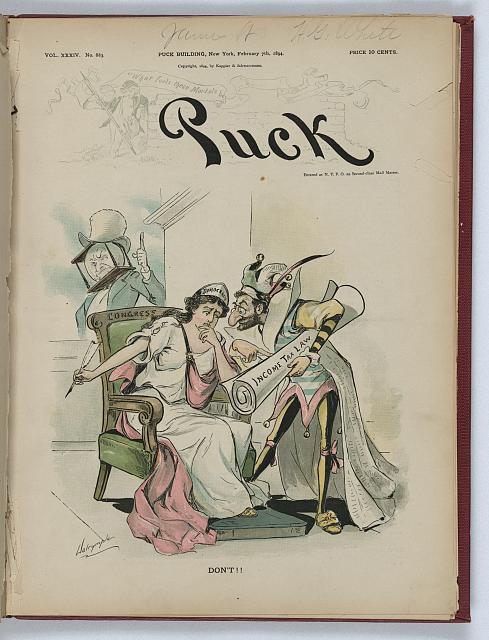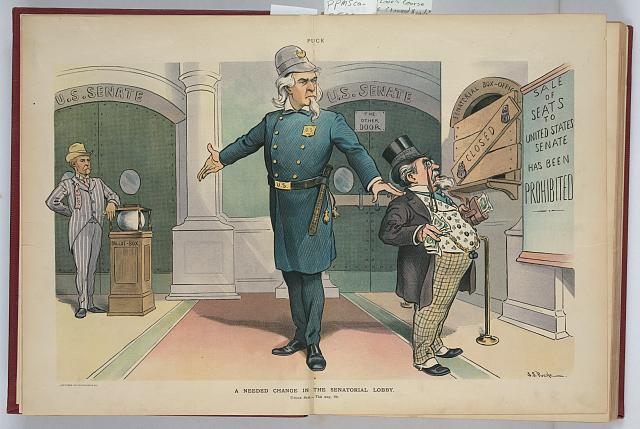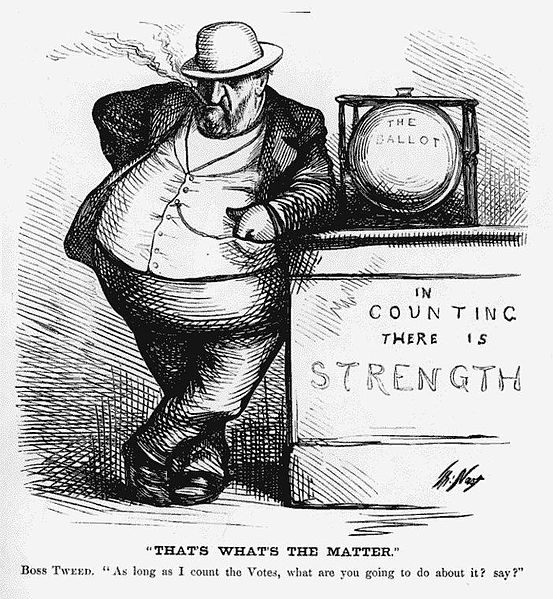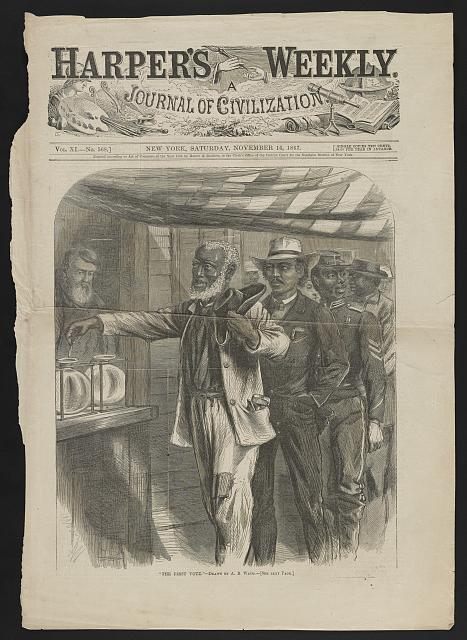How to Solve Voter Fraud, 19th-Century Style: A Glass Ballot Box
It was the best way to achieve literal transparency in democracy.

Voter fraud has been a contentious issue during the 2016 presidential election campaign, despite there being scant evidence that it actually occurs. But the methods being employed to combat it—such as the recruiting of volunteer “election observers” and ID requirements in 34 states—are nowhere near as creative, or as allegorical, as one of the most popular methods of the 1850s: the glass ballot box.
This invention was born as a response to the collective voice of enraged voters in San Francisco in 1856. It was in this year that the city’s Committee of Vigilance uncovered a ballot box designed to commit voter fraud. This “stuffer’s ballot box” was equipped with a false bottom and a small panel on the side that allowed officials to stuff fake ballots in without anyone noticing.
Anger and panic followed the discovery. Voters all over the nation worried about the legitimacy of the electoral process, and how much their vote actually counted. After all, the ballot box is the symbolic and literal keeper of votes, the place where the voices of the people are supposed to be safe. Without a reliable ballot box—the logic went—there could be no reliable democracy.
In the midst of this crisis in which people’s confidence in the system wavered, one New Yorker named Samuel C. Jollie sought to correct all issues of corruption with a simple solution. If the opposite of corruption is transparency, he seemed to think, then there could be no better way to ensure a rightful process than with a glass ballot box. By making a design that was inherently apparent, he could do away with all the suspicious elements of stuffer boxers. If everything was in sight, there could be no way to rig an election.

Ellery Foutch, Assistant Professor of American Studies at Middlebury College has conducted extensive research on Jollie’s invention. In her paper, “The Glass Ballot Box and Political Transparency,” she details how the box became patented, reproduced, and widely used after 1857. According to her, Americans at this time were obsessed with ideas of transparency, fairness, and virtue. Glass, which was just becoming easily accessible and cheap to produce, seemed to be the embodiment of the ideals that were thought essential to democracy.
As such, in the eyes of the public, the glass ballot box was corruption-proof. The clear sphere, held between an iron cast, only had a small hole through which rolled up ballots could be inserted. No secret compartments were possible, and taking ballots out required effort, so corrupt officials could not—at least in theory—take advantage of the democratic process.

What’s more, every citizen could become a vigilante of democracy, simply by paying attention to the contents of the box. As Foutch explained in an interview, at this time, political parties would often print out their own ballots in newspapers for people to bring to the voting booth. Therefore, a person’s vote could easily be identified by the color of the paper they were carrying. This had been the case before the glass ballot box appeared, but the new invention added the dimension of being able to keep tally of how the election was going simply by looking at the box.
Of course, not everyone believed in the infallibility of the new ballot box. Its critics declared that since officials would still be counting the ballots, fraud continued to be possible and probable. These fears carried over through the years and into the Reconstruction Era, where active measures of voter intimidation were employed to keep black voters from casting their votes.

To make matters worse, many latched onto the fact that the invention had been tied to corruption scandals in the year it was unveiled. These scandals were caused by speculation more than any solid proof, but saw Jollie accused of being in cahoots with the mayor of New York City. The purpose of the scheme was twofold: to somehow rig the elections in favor of the mayor, and to make a large profit by inflating the price of the boxes. Nothing really came out of the trials, but skeptics held onto the scandal as proof that their concerns were legitimate.

However, despite the early scandal that surrounded it, and the cries of the skeptics, the glass ballot box was adopted throughout the country. More importantly, it became an intricate symbol of the electoral process, used both to champion transparency in democracy, and to mock its processes. This is most clearly illustrated in political cartoons, where black and female suffragists and their opponents mold the symbol to their purposes as if it were made from glass in representation as well as form. In Foutch’s words:
The way in which people latched onto it as an emblem that could be used in whatever way they wanted, whether it was advocating for female suffrage or black suffrage or whether they were caricaturing women or people of color who were trying to vote. It’s this object that becomes a kind of locus for all of these concerns and hopes and fears.

The box was therefore much more important for its symbolic power than for the effectiveness of its use. Though it is hard to trace exactly when the object fell out of favor, it all but disappeared into antiquity rather unexpectedly in the beginning of the 20th century. By then, the ideas of transparent elections were being replaced with concerns about anonymity, and the argument that voters couldn’t be influenced or intimidated to vote for a certain candidate if nobody knew who they voted for. The opaque boxes came back to the booths, along with other more technologically advanced designs, while glass boxes were donated to museums and antique shops, or repurposed as fish bowls.

But while it was no longer present in voting booths, the glass ballot box continued to be around in political cartoons and allegorical images of justice. Its image of transparency and fairness, so important to the electoral process, was not easily discerned in the collective imagination. As Foutch describes it, “it had become a living memory.”
Object of Intrigue is a weekly column in which we investigate the story behind a curious item. Is there an object you want to see covered? Email ella@atlasobscura.com


















Follow us on Twitter to get the latest on the world's hidden wonders.
Like us on Facebook to get the latest on the world's hidden wonders.
Follow us on Twitter Like us on Facebook